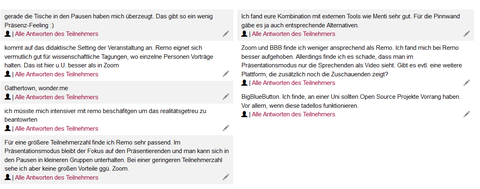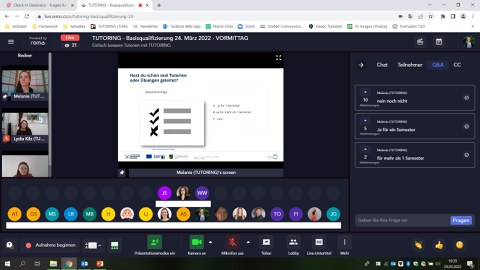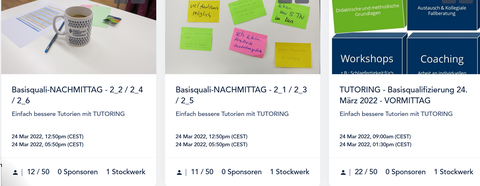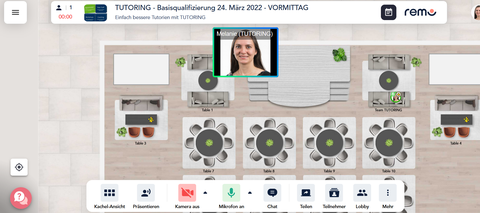Foundation Qualification for Tutors using the Remo Virtual Conference Tool: Dipl.-Psych. Melanie Ludwig (#ML1)
Brief Description
This optional foundation qualification course is open to tutors in all courses of study at TU Dresden. The course enables participants to explore topics such as the methodology and didactics of tutorials and exercises. In supplementary workshops, they learn how to give presentations or consolidate their intercultural skills, which they can then use in their own teaching.
Keywords
- Qualification
- Tutors
- Continuing education

© Melanie Ludwig

© Melanie Ludwig

© Melanie Ludwig

© Melanie Ludwig
What makes this gem special?
The objective of this foundation qualification is to acquire and practice using didactic skills. Since it was still unclear in the winter of 2022 whether and under what conditions face-to-face events would be possible, we planned to hold this one-day qualification course online. To avoid “Zoom fatigue,” we decided to instead use ‘Remo’ after undertaking some thorough research. This software is well-suited to a broad spectrum of teaching formats, meeting the wide range of needs represented in large courses in the early stages of a degree program (lectures, discussions, exercises). The morning consisted of foundation training courses. Following these, the participants attended consolidating workshops in the afternoon, which they found to be most helpful for their work. They could choose between content for engineering (designing interesting calculation exercises), for business and economics (moderation vs. online meetings), or the humanities (literature-based tutoring). Separate break-out groups, which were displayed on screen as separate tables and rooms, provided spaces for the tutors to discuss ideas and share experiences. Love of teaching and practical experience stood at the forefront of these discussions.
Lessons learned:
- The morning comprised short presentations on various topics (20 minutes per topic), each separated by a 10-minute break – this format received very positive feedback from the participants.
- Participants could enter their “own” break area and decide when to leave it, enabling them to re-energize for the next session and to “digest” what they had just learned.
- The software interface with mini avatars allowed for better orientation and participants could switch between the event areas (breakroom, tables for discussions, conference area).
- The full version of the software is very expensive and, if purchased, should be done so together with other departments.
- It is easy to use and the design is simple – there are a lot of event templates to choose from.
Related links
Contact
Organizational unit
Center for Continuing Education
Course size
Up to 30 students
Voting ID
#ML1



